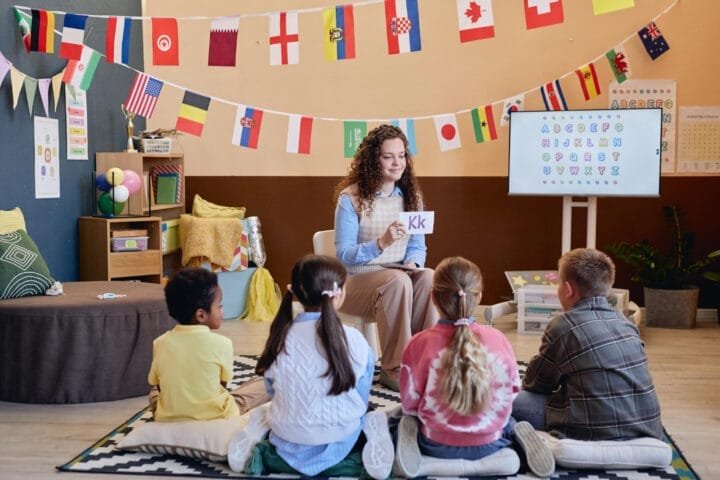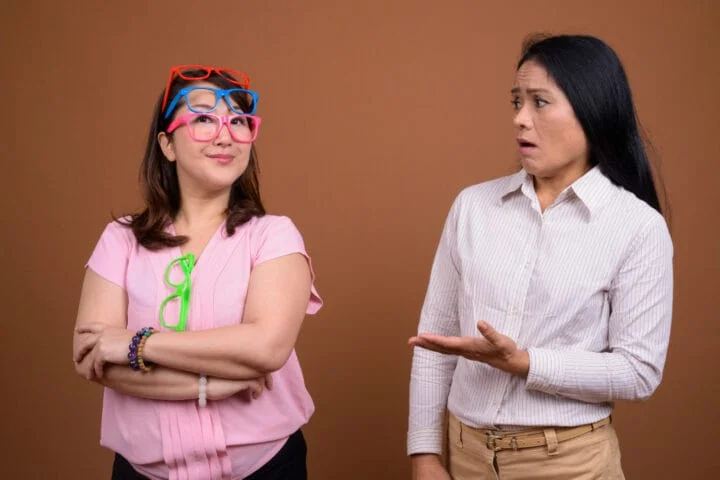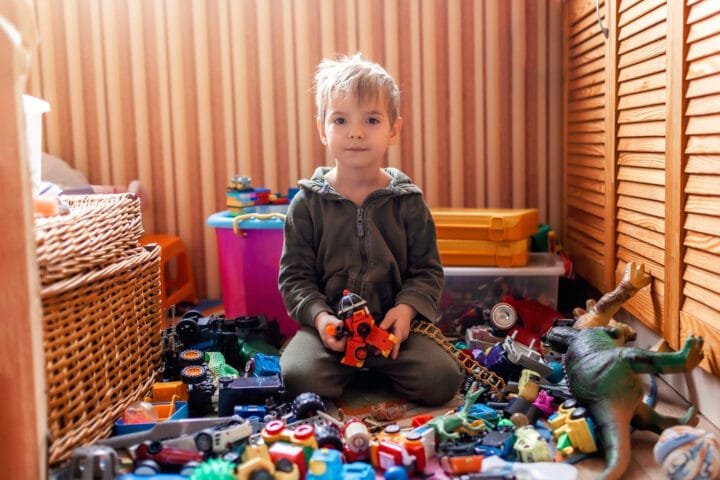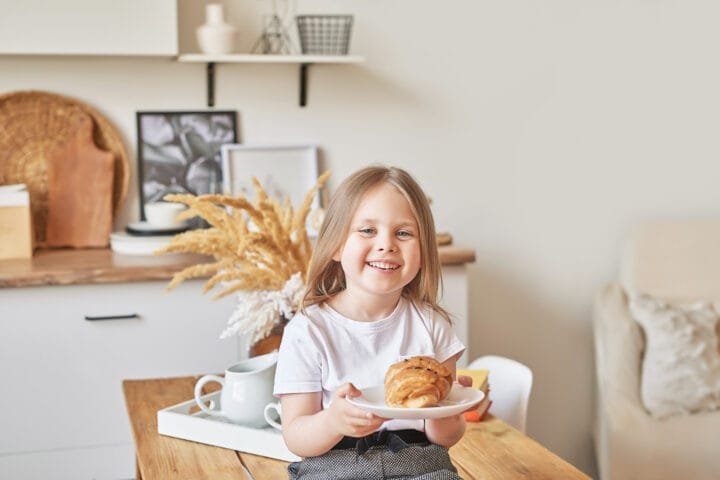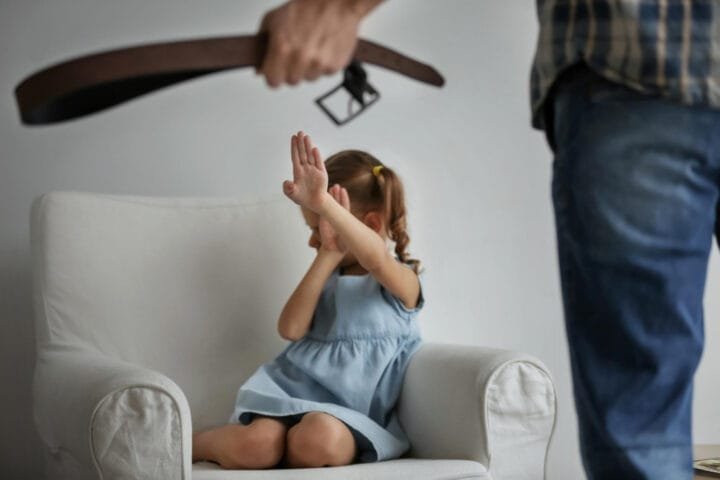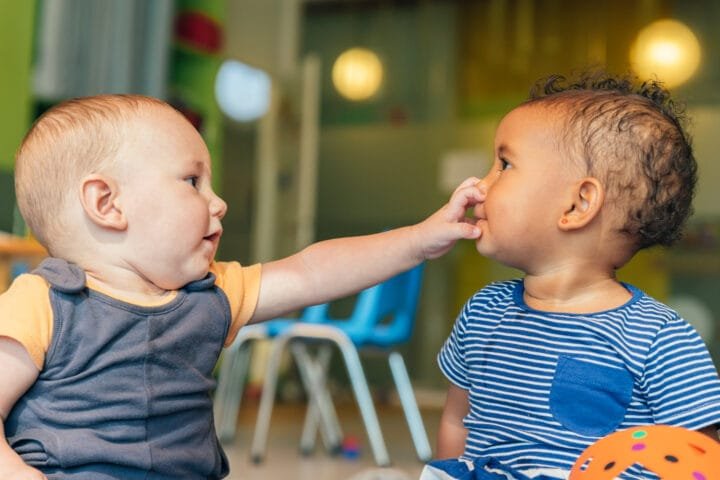How to Make Gratitude Fun: Expert Tips for Encouraging Kids to Write Thank-You Notes
A heartwarming guide to nurturing gratitude in the digital age
You know that moment when your child rips open a gift, their eyes sparkling with joy, only to disappear faster than a magician when you mention writing a thank-you note? I’ve been there more times than I can count. As a mom of three wonderful (and sometimes wonderfully stubborn) kids, I’ve learned that turning thank-you notes from a dreaded chore into a cherished tradition isn’t just possible – it’s actually fun!
Let me share something that changed everything for me. Last Christmas, my youngest, Sophie, surprised everyone by eagerly sitting down to write her thank-you notes. The secret? We’ve completely transformed our approach to gratitude, and I’m about to show you exactly how we did it.
Setting the Right Foundation: Where the Magic Begins
Remember that saying about how children learn what they live? Well, it couldn’t be truer when it comes to gratitude. When I first started this journey, I made the classic mistake of telling rather than showing. Then one day, my seven-year-old Jake asked, “Mom, why don’t you write thank-you notes?”
Talk about a wake-up call!
That’s when we started our “Gratitude Hour” – a special time after dinner when our whole family shares moments of thankfulness. Sometimes it’s simple as appreciating the chocolate chip cookies we baked together; other times it’s deeper reflections about kindness we’ve received.
The transformation was remarkable. Within weeks, our children started noticing and expressing gratitude unprompted. Little Emily even thanked her brother for sharing his toys – a minor miracle in our household!
Making Gratitude Fun: The Game-Changing Approach
Here’s where things get exciting. Remember Sophie, who now loves writing thank-you notes? It all started when we turned our dining room into what we call the “Gratitude Station.” Picture this: a cozy corner with sparkly gel pens, rainbow papers, and yes, even those ridiculously cute animal stickers she adores.
We made it special by creating what we call “Thankful Thursdays.” Every Thursday afternoon, we put on some fun music, bring out special snacks (because everything’s better with cookies, right?), and make thank-you notes writing a celebration rather than a chore.
One particularly memorable Thursday, Sophie created what she called a “gratitude rainbow” – a thank-you note where each line was written in a different color, forming a rainbow effect. Her grandmother cried happy tears when she received it, and Sophie learned firsthand how powerful expressing gratitude can be.
The Art of Age-Appropriate Thank-You Notes
Let’s be real – expecting a four-year-old to write a formal thank-you letter is like expecting a cat to fetch – it’s just not going to happen. Instead, we need to meet our kids where they are.
For my toddler Tommy, we started with something simple: drawing pictures of the gifts he received. He’d scribble his “masterpiece” (sometimes unrecognizable, but always filled with love), and I’d help him write a simple “Thank you” at the top. The pride in his eyes when sealing those envelopes was worth every crayon-smudged minute.
Middle-schooler Jake preferred what we call the “3-2-1 Method”:
- Three things about the gift he loves
- Two ways he’ll use it
- One special memory about the gift-giver
And for teenage Emily? We discovered that giving her creative freedom while maintaining structure worked best. She now designs her own digital thank-you cards but writes personal messages by hand inside – a perfect blend of modern and traditional.
Practical Tips That Actually Work: Real Solutions for Real Families
Remember that time my son Jake had fifteen thank-you notes to write after his birthday party? The mere thought of it nearly caused a meltdown (for both of us!). That’s when we discovered what I now call the “Bite-sized Gratitude” approach.
Instead of facing that mountain of notes all at once, we broke it down into three notes per day. Suddenly, the impossible became manageable. Jake even started looking forward to his “thank you time” because he knew it wouldn’t overwhelm him.
Here’s a game-changer that worked wonders in our house: We created the “Gratitude Journal” method. Before writing any formal thank-you notes, we spend five minutes jotting down specific things we loved about each gift. This simple practice turned writer’s block into a flood of genuine appreciation.
Overcoming Those “But I Don’t Wanna” Moments
Let’s be honest – even with all these fun approaches, kids will still have resistant days. Last month, Emily rolled her eyes so hard at the mention of thank-you notes, I thought they might get stuck that way! But here’s what really works:
The “Choice and Voice” strategy changed everything. Instead of saying, “You need to write these notes now,” I started offering options: “Would you prefer to write your notes while listening to music, or would you like to do it during our special hot chocolate time?” Giving them control over the ‘how’ made them more accepting of the ‘what.’
One particularly challenging day, Sophie declared she “hated writing.” So, we tried something different – she recorded video thank-you messages first, then used those as scripts for her written notes. The result? Not only did she write beautiful notes, but she actually enjoyed the process!
Building Lasting Habits: Beyond the Thank-You Note
The most amazing thing happened last week. Without any prompt, Jake wrote a thank-you note to his teacher for helping him with math. This wasn’t for a gift – it was pure, unprompted gratitude. That’s when I knew our efforts were creating something bigger than just good manners.
We’ve noticed other positive changes too. Our dinner conversations have become deeper, more meaningful. The kids are more aware of others’ feelings and more appreciative of small kindness. It’s like we’ve unlocked a secret superpower – the ability to find joy in giving thanks.
The Digital Age Dilemma: Finding Balance
In today’s world of instant messages and emoji reactions, you might wonder if handwritten thank-you notes are still relevant. Here’s what I’ve discovered: they matter more than ever. When Sophie’s grandmother received her handwritten rainbow thank-you note, she called in tears, saying it was the first handwritten letter she’d gotten in years.
That said, we’re not completely old-school. For distant relatives, we sometimes combine approaches – the kids write their notes, we snap a photo and send it digitally. This way, the recipient gets the note instantly but still enjoys the personal touch of handwriting.
How Gratitude Changes Everything?
Last week, something extraordinary happened. Emily’s friend came over and noticed our Gratitude Station. She was so intrigued that she asked to make a thank-you note for her mom – just because. That’s when it hit me: we’re not just teaching our kids a social skill; we’re cultivating a mindset that could change their lives.
Research shows that grateful children are happier, more resilient, and even perform better in school. But beyond the statistics, I see the difference in my own children’s eyes. They’re more content, more connected, and more aware of the good in their lives.
Making It Stick: Creating Lasting Traditions
We’ve made a thank-you note writing about a special event in our family. After holiday gatherings or birthdays, we have what we call our “Gratitude Celebration.” We put on favorite music, serve special treats, and make an afternoon of creating beautiful notes together.
The key is consistency without pressure. Some days, the notes are works of art with stickers and drawings. Other days, they’re simple but sincere. What matters is that we’re teaching our children that expressing gratitude is a gift.
Looking Ahead: The Legacy of Gratitude
As I watch my children grow in their ability to express thankfulness, I’m filled with hope. These aren’t just thank-you notes – they’re building blocks for empathy, connection, and joy. They’re learning that gratitude isn’t just about good manners; it’s about recognizing and celebrating the kindness in their lives.
Remember, this journey isn’t about perfection. It’s about progress, one thank-you note at a time. Start small, make it fun, and watch as gratitude transforms your family’s life, just as it has transformed ours.
When Sophie asked me yesterday why we write thank-you notes, I smiled and told her, “Because kindness deserves to be celebrated.” She thought for a moment, then grabbed her favorite sparkly pen and started writing. And in that simple moment, I knew we were creating something beautiful – a legacy of gratitude that will last a lifetime.
The Art of Making It Personal: Beyond Basic Thank-You Notes
You won’t believe what happened during our latest thank-you note session. Ten-year-old Jake, usually our resident grudging writer, spent an entire hour crafting the perfect note for his grandfather’s model train set. Why? Because we’d finally cracked the code on making it personally meaningful.
Here’s the real magic: we started connecting the notes to storytelling. Instead of the usual “Thank you for the gift,” Jake wrote about how he and Grandpa would build the train set together during his next visit. His eyes lit up as he described the tunnels they’d create and the mountains they’d build. Suddenly, the thank-you note wasn’t just about the gift – it became a bridge to future memories.
Creative Techniques That Sparked Joy
Remember that rainy Sunday when we were all stuck inside? That’s when we discovered what I now call the “Memory Snapshot” technique. We spread out all the holiday photos and let the kids pick their favorites to include with their thank-you notes. Emily chose a picture of herself wearing the new sweater from Aunt Sarah, beaming at the camera. That photo sparked a heartfelt note about how she felt “wrapped in a warm hug” every time she wore it.
Sophie, our artistic six-year-old, invented her own style: the “Rainbow Thank-You.” Each line is written in a different color, creating a visual celebration of gratitude. What started as a creative experiment became her signature style, and now relatives actually look forward to her colorful expressions of thanks.
Turning Challenges into Opportunities
Let me tell you about our biggest breakthrough – it came from our biggest challenge. Tommy, our youngest, struggled with writing due to dyslexia. Rather than forcing traditional notes, we created the “Gratitude Comic Strip.” He draws three panels: receiving the gift, using it, and how it makes him feel. Then we add simple word bubbles together. His thank-you comics have become family treasures.
The Unexpected Benefits
Here’s something fascinating: since starting our gratitude journey, we’ve noticed changes far beyond better manners. Emily’s teacher mentioned she’s become more attentive to her classmates’ needs. Jake voluntarily shared his new video game with his sister (a minor miracle!). And Sophie? She started a “kind journal” all on her own.
Tech-Savvy Gratitude: Finding Modern Balance
Last Christmas brought an interesting twist. Our tech-savvy teens, Emily, suggested creating a digital gratitude board where family members could post photos of themselves using their gifts throughout the year. We agreed – with one condition: handwritten notes would still be the foundation. The result? A beautiful blend of traditional appreciation and modern connection.
The Family Gratitude Project
One evening, while sorting through old thank-you notes (yes, I keep them!), we discovered something beautiful. Each child’s notes told a story of their growing emotional awareness. From Tommy’s early scribbles to Emily’s thoughtful reflections, we could trace their journey in understanding and expressing gratitude.
This inspired our “Family Gratitude Project.” Now, we keep a shared journal where we write mini thank-you notes to each other for everyday kindness. Finding “Thank you for helping me with homework” or “Thanks for making my favorite sandwich” tucked between the pages has become a cherished part of our daily life.
Creating Special Moments
The most magical moments often come unexpectedly. Like when Sophie decided to write thank-you notes to her stuffed animals for “keeping her company.” While it made us laugh, it showed how natural gratitude had become part of her worldview.
We’ve turned thank-you note writing into special one-on-one times. Each child gets their “gratitude date” with mom or dad, complete with favorite snacks and undivided attention. These moments have become precious opportunities for connection and conversation.
The Ripple Effect in Our Community
The impact extended beyond our family walls. When Jake’s baseball team started writing thank-you notes to their coaches after each season, other teams followed suit. Soon, the whole league adopted practice. It’s amazing how one small act of gratitude can create such positive change.
Looking to the Future
As I watch my children grow in their ability to express genuine thankfulness, I’m filled with hope. These aren’t just thank-you notes – they’re building blocks for empathy, connection, and joy. They’re learning that gratitude isn’t a chore but a gift that enriches both the giver and receiver.
Remember that challenging Thursday afternoon when everyone resisted writing their holiday thank-you notes? Well, yesterday, I found all three kids at the Gratitude Station, voluntarily writing notes to their teachers for the end of the school year. No prompting. No reminders. Just pure, genuine gratitude flowing from their hearts to their pens.
And isn’t that what we’re really aiming for? Not just teaching our children to write thank-you notes but helping them develop hearts that naturally overflow with gratitude. Because in the end, it’s not about the notes themselves – it’s about nurturing souls that recognize and celebrate the goodness in their lives.
FAQs
Children can begin participating in the thank-you note process as early as age 2-3! While they won’t be writing independently, toddlers can start by drawing pictures or adding stickers to express gratitude. By age 5-6, they can help dictate messages and sign their names. Around age 7-8, most children are ready to write simple notes with guidance. Remember, it’s less about the perfect age and more about creating a positive association with expressing gratitude early on.
The key is making it fun rather than forcing it! Start by breaking the task into smaller, manageable chunks. Create a special “gratitude station” with their favorite snacks, music, and art supplies. Consider alternative approaches like photo thank-you cards, video messages, or gratitude comics. Most importantly, led by example and celebrate their efforts, no matter how small. When children see thank-you notes as a creative expression rather than a chore, resistance typically melts away.
A child thank-you note should be sincere and specific but doesn’t need to be lengthy. Encourage them to include:
- A direct “thank you” for the specific gift
- Something they like about the gift
- How they plan to use it
- A personal connection with the gift-giver for younger children, even a simple “Thank you for the [gift]. I love it!” with a drawing is perfectly acceptable. The goal is authentic gratitude, not perfection.
While traditional etiquette suggests sending thank-you notes within two weeks of receiving a gift, the most important thing is that they’re sent! A good rule of thumb is within a month for most occasions. For major events like birthdays or holidays, try to complete them within 2-3 weeks. If you’re running late, simply acknowledge the delay in the note – it’s better to send a late thank-you than none at all.
In today’s digital age, handwritten notes still carry special significance. They show extra effort and create a keepsake for the recipient. However, the best approach often depends on the situation and the recipient’s preferences. For younger relatives who appreciate technology, a combination can work well – perhaps a handwritten note photographed and sent digitally for immediate gratification, followed by the physical note in the mail. The key is maintaining the personal touch, regardless of the format.
5 Recommend Books
“The Kids’ Guide to Writing Great Thank-You Notes” by Jean Summers
A lovely book teaching kids the etiquette and how-to of thank-you notes. Perfect for young recipients ages 5-10. The author brings what’s becoming a lost art back into our lives in an engaging way that speaks directly to children.
“I Am Thankful (Little Golden Book)” by Margret McNamara
An excellent starter book for toddlers, offering simple yet powerful messages about appreciating everyday blessings like family, friends, and nature. Perfect for introducing the concept of gratitude to very young children.
“Have You Filled a Bucket Today?” by Carol McCloud
This classic book uses a simple bucket metaphor to teach kids how small acts of kindness and gratitude “fill” others’ buckets (and their own). It’s an excellent way to explain empathy and thankfulness to young children.
“Gratitude is My Superpower” by Alicia Ortego
In this engaging story, children follow a character as they learn to be thankful for both big and small things in life. The book helps kids see how practicing gratitude can change their perspective and lead to more happiness.
“The Thank You Book” by Mo Willems
In this humorous and sweet book, the character sets out to thank everyone who’s been important to them. This fun read reminds kids about the importance of expressing gratitude to the people who brighten their lives.























